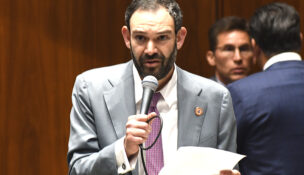Proposal using inmate wages advances
Arizona Capitol Reports Staff//April 27, 2007//[read_meter]
A proposal that taps into prisoners’ wages to expand a program meant to prepare them as they rejoin society won Senate passage on April 25. The measure, H2298, takes 5...
No tags for this post.

















